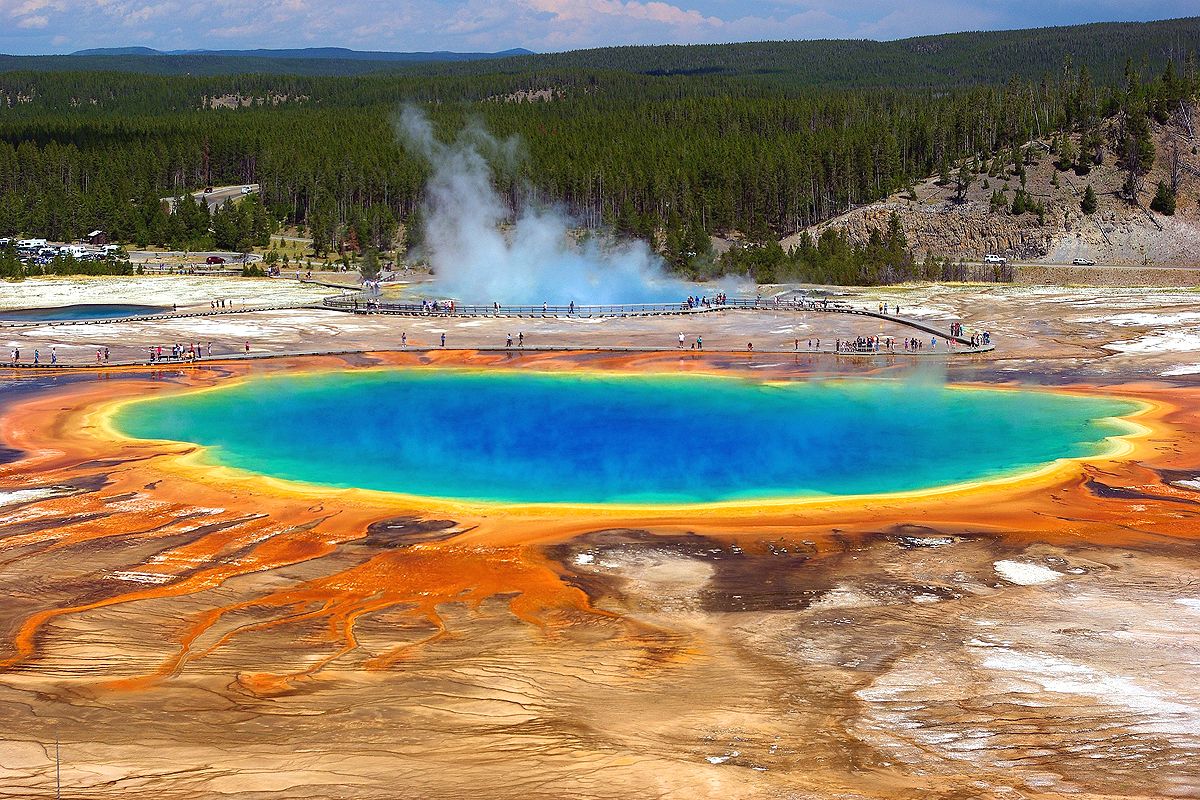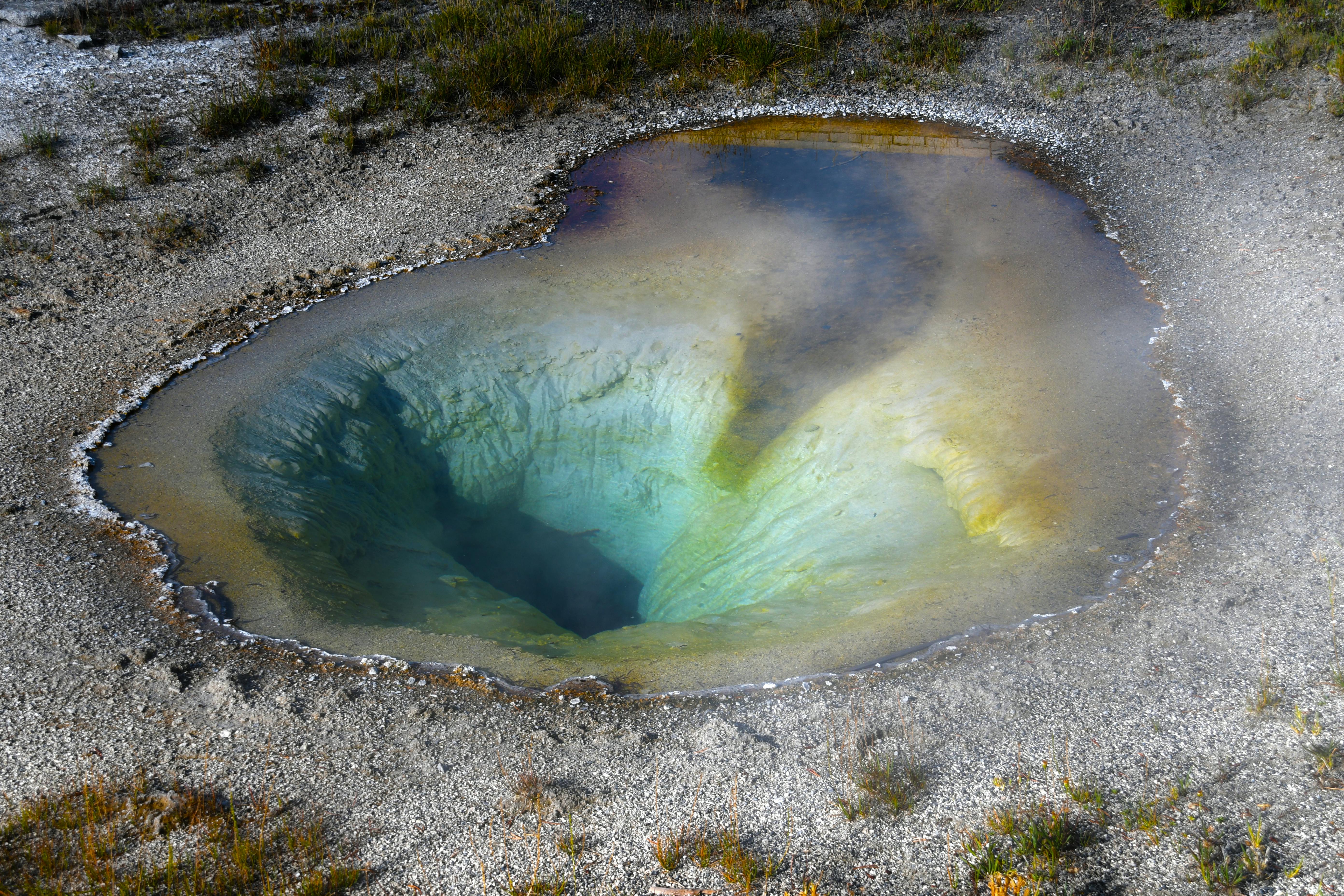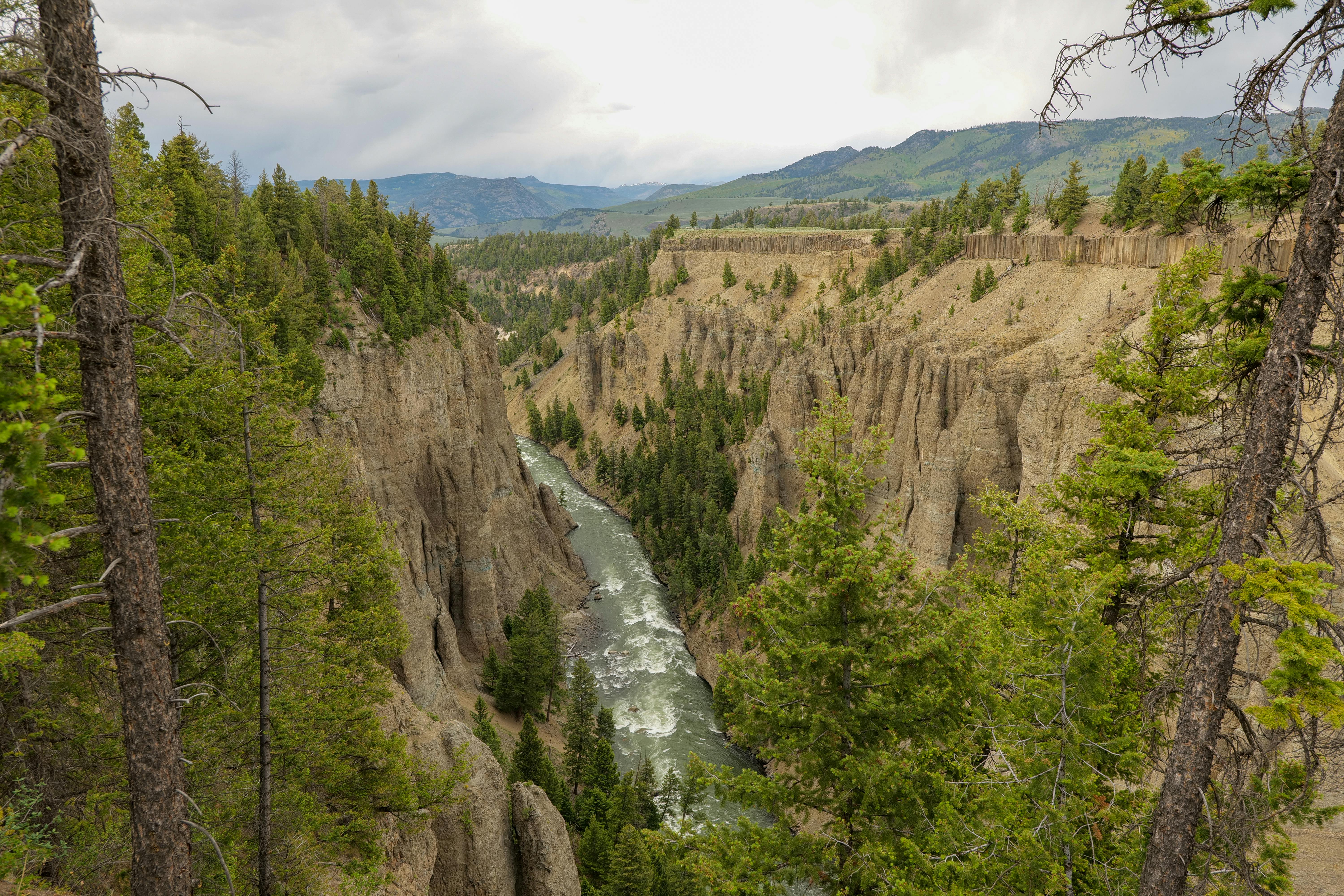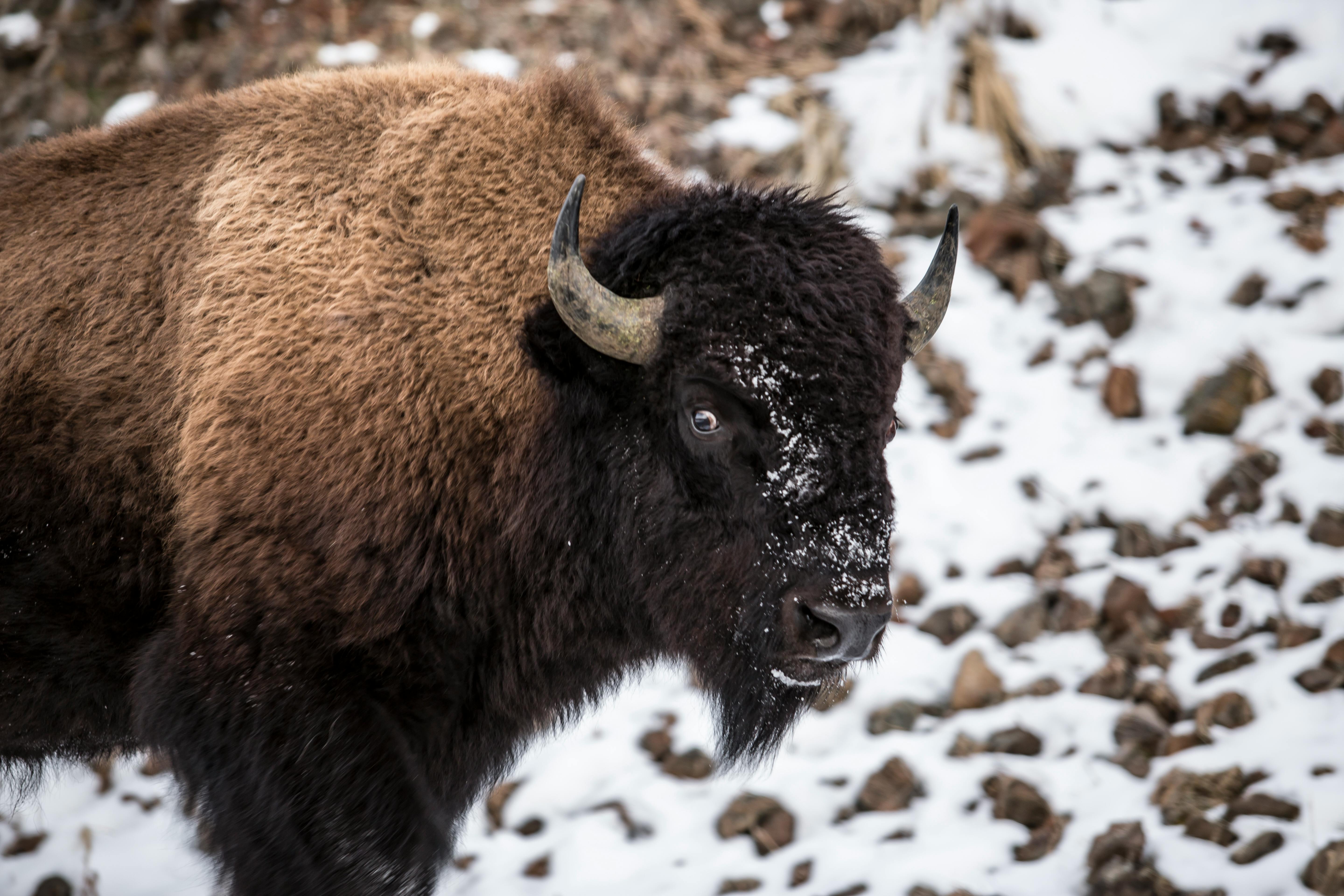
Yellowstone is a rare mix of raw geology, wild herds, and big-sky vistas. This complete 2025 travel guide covers the best time to go, top attractions, essential hikes, wildlife watching tips, itineraries for 3–7 days, and practical advice for photographers and first-time visitors.
Why Visit Yellowstone National Park?
Established in 1872 as the world’s first national park, Yellowstone protects a supervolcano-powered landscape of 10,000+ hydrothermal features, broad valleys, waterfalls, and North America’s largest wild bison population. In one loop drive you can watch Old Faithful erupt, stroll steaming boardwalks, and scan the Lamar Valley for wolves.
Photo :Siegfried Poepperl
Best Time to Visit Yellowstone (Season by Season)
The “best” season depends on what you want most—wildlife, pleasant weather, thin crowds, or dramatic winter scenes.
| Season | Why go | Consider |
|---|---|---|
| Spring (Apr–Jun) | Newborn wildlife, rushing waterfalls, fewer people early in the season. | Some roads/trails open late due to snow; variable temps. |
| Summer (Jul–Aug) | All areas accessible, long daylight, ranger programs, family-friendly. | Peak crowds and prices; start days early to beat traffic/parking pinch. |
| Fall (Sep–Oct) | Golden aspens, elk rut activity, cooler hiking weather, fewer crowds. | Services begin to close; frost/snow possible at higher elevations. |
| Winter (Nov–Mar) | Silent, snowy basins; guided snowcoach/snowmobile access; unique photos. | Limited roads/lodging; plan guided tours; dress for sub-zero mornings. |
How Many Days Do You Need in Yellowstone?
Two days is the bare minimum for highlights; five to seven lets you slow down, hike, and watch wildlife at golden hours.
- 2–3 days: Old Faithful area, Grand Prismatic overlook, Grand Canyon of the Yellowstone, a sunrise/sunset in Hayden or Lamar Valley.
- 5 days: Add Norris & Mammoth Hot Springs, Yellowstone Lake, plus a half-day hike.
- 7 days: Layer in multiple hikes, an additional wildlife morning, and a stargazing session.
Top Attractions & Best Photography Spots
Old Faithful & Upper Geyser Basin
Home to the world-famous geyser and the densest concentration of geysers on Earth. Walk the boardwalk loop; check the visitor center for eruption predictions.
Grand Prismatic Spring (Midway Geyser Basin)
Iconic rainbow pool. For the postcard view, hike the overlook trail near Fairy Falls trailhead and aim for late morning when steam often lifts.
Grand Canyon of the Yellowstone
See both rims. Artist Point (South Rim) is a classic; take Uncle Tom’s Trail (strenuous stairs) for a dramatic Lower Falls perspective.
Lamar Valley
Prime wildlife corridor for bison, pronghorn, and wolves at dawn/dusk. Bring binoculars or a 300mm+ lens and scan from designated pullouts.
Hayden Valley
Another wildlife hotspot, especially for bison and birds. Sunrise fog can add mood to photos along the Yellowstone River.
Mammoth Hot Springs
Terraced travertine formations that change over time. Early morning or late afternoon side-light shows texture and color.
Best Hikes in Yellowstone
Boardwalks offer great access, but a few trails deliver quieter views and fresh angles for photography.
- Fairy Falls (to Grand Prismatic Overlook): Easy-moderate; combine overlook with the falls for a half-day.
- Mount Washburn: Panoramic summit views; bring layers for wind and quick weather shifts.
- Uncle Tom’s Trail: Steep stairs to a roaring Lower Falls viewpoint—leg burner but worth it.
- Lamar Valley trails: Short wildlife-friendly rambles; always carry bear spray and know how to use it.
- Mystic Falls/Observation Point: Compact loop with varied scenery near Old Faithful.
Wildlife Watching & Safety
Yellowstone is one of the best places in North America to see large mammals in the wild. Patience pays: arrive before sunrise or linger at dusk.
- Keep distance: At least 25 yards (23 m) from most wildlife and 100 yards (91 m) from bears and wolves.
- Use pullouts: Never stop in the road; use designated areas and keep lanes clear.
- Carry bear spray: Know the safety protocol; store food and scented items properly.
- Respect the rhythm: Animals have priority—your best photos come from patience, not pushing closer.
More on animals and gear in our Wildlife Photography Guide.
Photography & Stargazing Tips
Golden-hour plan
- Sunrise: Hayden or Lamar Valley (wildlife silhouettes, ground fog), Canyon overlooks (mist).
- Sunset: Grand Prismatic area (watch steam direction), Mammoth terraces for side-lit textures.
Gear suggestions
- Zoom 24–105mm or 24–120mm for landscapes/boardwalks; 70–200mm or 100–400mm for wildlife.
- Sturdy tripod for twilight and night shots; ND/polarizer filters for mid-day glare.
- Dry bag and microfiber—geysers can mist gear.
Night sky
Yellowstone’s high elevation and remote valleys offer excellent stargazing. Pick a moonless night, check cloud forecasts, and favor pullouts with clear horizons. Keep wildlife safety rules even after dark.
Deep-dive: Stargazing in Yellowstone — best spots & camera settings.
Logistics, Reservations & Money-Saving Tips
Getting there & around
- Gateways: West Yellowstone (MT), Gardiner (MT), Cody (WY), Jackson/Grand Teton (WY).
- A car is the most flexible option. Expect occasional wildlife “bison jams.”
Where to stay
- Inside the park: Unbeatable access, especially for sunrise/sunset. Book early.
- Outside the park: More availability and price range (West Yellowstone, Gardiner, Cody, Jackson).
Passes & fees
- Consider the America the Beautiful annual pass if visiting multiple parks.
Roads & closures
Some park roads are seasonal; spring openings and fall closures vary with weather. Always check current conditions before you drive long distances between areas.
Save time & money
- Start at dawn to beat parking crunch and see wildlife.
- Pack lunches and refill water at visitor centers.
- Group sites geographically to avoid backtracking on the loop roads.
Sample Itineraries (3, 5 & 7 Days)
3 Days — Yellowstone Highlights
- Day 1: Old Faithful & Upper Geyser Basin → Mystic Falls/Observation Point → sunset at Midway/Grand Prismatic overlook.
- Day 2: Canyon area (Artist Point, Uncle Tom’s Trail) → Hayden Valley sunset.
- Day 3: Mammoth Hot Springs → drive wildlife pullouts en route.
5 Days — Balanced Adventure
- Day 1–2: Old Faithful basins + Grand Prismatic; add Fairy Falls.
- Day 3: Canyon & Hayden Valley sunrise.
- Day 4: Norris Geyser Basin + Mammoth terraces.
- Day 5: Lamar Valley dawn wildlife watch; optional stargazing at night.
7 Days — In-Depth
- Days 1–2: Upper/Midway geyser basins + Fairy Falls and Mount Washburn.
- Day 3: Canyon both rims + waterfall viewpoints.
- Day 4: Yellowstone Lake shoreline stops; picnic and short walks.
- Day 5: Norris + Mammoth; golden-hour terraces.
- Day 6: Lamar Valley sunrise; easy hike; rest midday.
- Day 7: Flex day for weather, a second wildlife morning, or a guided winter/snowcoach in season.
Yellowstone FAQ
Is Yellowstone safe for first-time visitors?
Yes—if you follow park rules. Stay on boardwalks in thermal areas, keep wildlife distances, and watch weather/road updates.
Can you see Yellowstone in one day?
You can sample a few highlights (Old Faithful, one canyon viewpoint, one valley), but it’s rushed. Two to three days is far better.
Do I need reservations?
Summer lodging inside the park books early. Nearby towns offer more options. Tours (like winter snowcoach) also require advance booking.
What’s the best month to visit?
For access and long days, July–August. For fewer crowds and wildlife activity, June or September. Winter is magical with planning.
How close can I get to animals?
At least 25 yards (23 m) from most wildlife and 100 yards (91 m) from bears and wolves—use pullouts and long lenses.
Is stargazing good in Yellowstone?
Yes—high elevation and dark skies make for excellent Milky Way views on moonless nights. Follow night safety and wildlife guidance.
You might also like our guides to Yellowstone’s supervolcano & geysers and Winter vs Summer.


